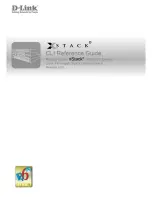
4-8
October, 1998
GRF 400/1600 Getting Started - 1.4 Update 2
Initial System Set-up
Overview of GRF user interface components
UNIX shell
While in the CLI you use the sh command to open a UNIX shell. The shell supports standard
UNIX commands and the GRF UNIX-like commands. You can manage the GRF using the
UNIX network and configuration management commands. The GRF also has a number of
configuration files that you edit with a UNIX editor, you must be in the shell to edit GRF
configuration files.
To configure and manage the GRF, you will use both the CLI command set and the UNIX
shell. Type exit to leave the shell. When you exit the UNIX shell, you can execute CLI-only
commands.
maint commands
A third component is the set of maint commands specific to each media card. The maint
commands display low-level card-specific statistics and counts. These commands are
documented within each media card’s configuration chapter in the GRF Configuration and
Management manual. The HSSI card maint commands are in the “HSSI Configuration”
chapter, for example.
As noted, this is a brief overview. The “Working in the GRF User Interface” chapter in the
GRF Configuration and Management manual provides information and examples using the
CLI profiles and commands.
What to do next...
The next step is to configure logging. What you do depends upon the option you have chosen
for external logging. The options are described in this order:
–
“local” logging and dumping to an external PCMCIA flash device
–
remote logging (over the network) to a syslog server
–
remote logging (over the network) to an NFS-mounted file system
















































